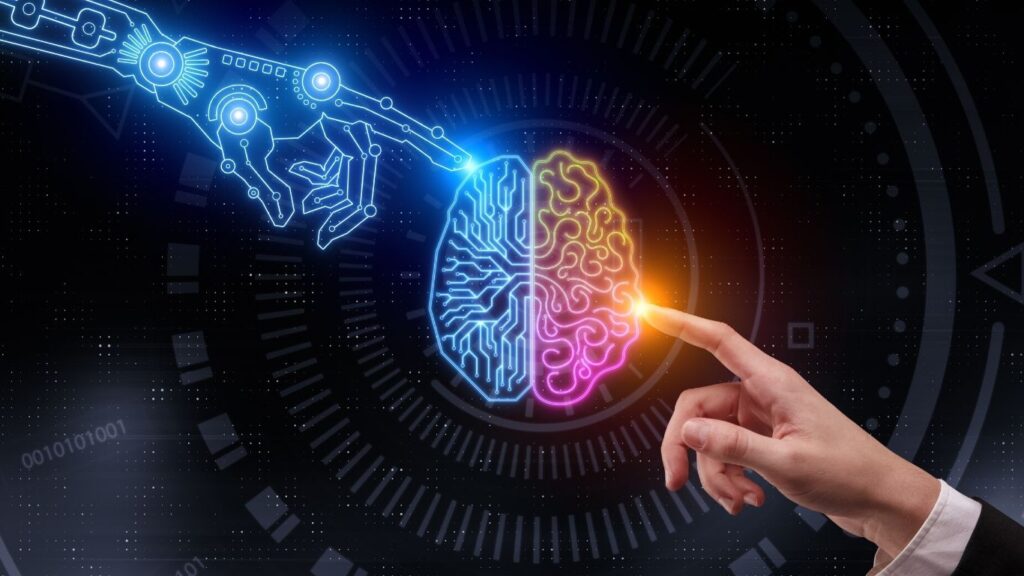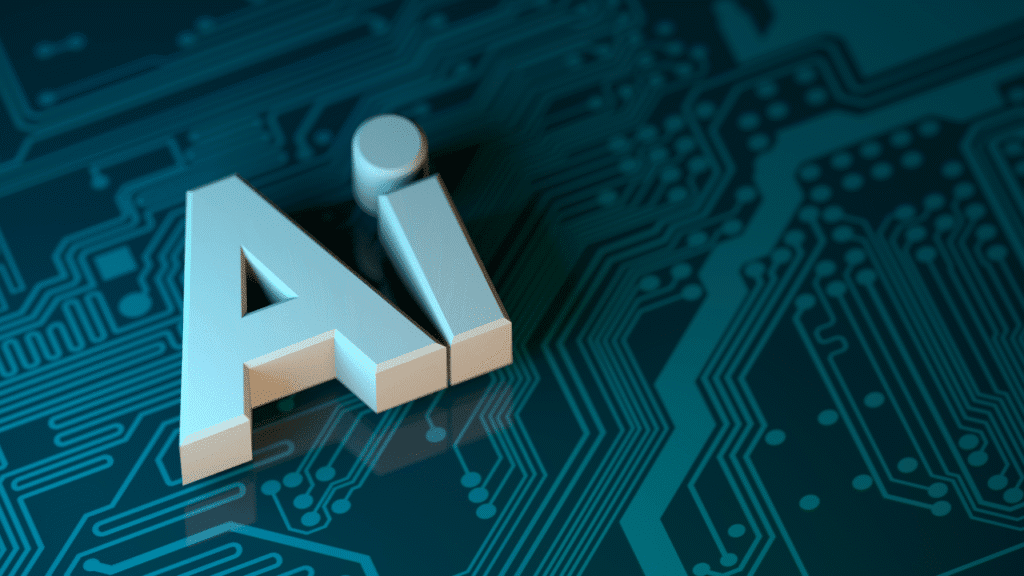Rapidly, the effects of the digital revolution are being felt globally with two technological titans: Artificial Intelligence (AI) and the Internet of Things (IoT), one that fits in the industries and every little aspect of life. Working together, AI and IoT create intelligent ecosystems, popularly called AIoT (Artificial Intelligence of Things), connecting devices to see one learn, reason, and act with complete autonomy.
Internet of Things refers to a network of physical devices interconnected for collecting and exchanging data over the internet. These “things” could cover everything from household appliances and wearable devices to industrial sensors and smart cities.
The basic components of IoT
- Sensors/Devices: Capture data from the environment (temperature, motion, sound, etc.).
- Connectivity: Issues data through Wi-Fi, Bluetooth, 5G, etc.
- Data Processing: Checking gathered data, mostly in the cloud or on the edge.
- User Interface: Provides insights and user control through applications or dashboards.
What is Artificial Intelligence?
Artificial Intelligence is the imitation reproduction of human intelligence into machines. AI results in systems completing tasks that require human-level intervention in terms of learning, proposal solution, perceptual act, or decision making.
AI + IoT = AIoT
The intertwining, or merging, of AI and IoT is said to create AIoT, which fosters an ambience whereby devices communicate with each other as they concurrently analyze the data, predict, and automate actions with virtually no human interference.
AI gives real-time intelligence to act on the input data while IoT provides the data.
How AI Enhances IoT Systems
AI intrudes into IoT systems in different aspects:
1. Predictive Maintenance
We use our algorithms to let AI analyze machinery component data through IoT sensors and thereby predict the onset of failures before they actually occur. This powerful application has now found its way into manufacturing and aerospace.
2. Anomaly Detection
AI models for anomaly behavior detection or malfunctions within any IoT device intervene into the fields of fraud detection, cyber security, and health care monitoring.
3. Personalization
AI is applied by smart devices, such as home assistants or fitness trackers, to learn user preferences and behavior so as to offer a more personalized experience.
4. Automation and Decision-Making
AI enables IoT systems to make decisions on their own. For example, a smart thermostat that learns patterns and adjusts temperatures automatically.
5. Edge AI
AI on the Edge reduces latency and increases privacy by processing information on the device (versus sending information to the cloud).
Real-World Applications of AI and IoT
1. Smart Manufacturing
AIoT is the real-time monitoring of production lines through AI identification of equipment failures, optimization of energy consumption, and assurance of product quality. This indeed is the key to the Industry 4.0 revolution.
2. Healthcare
Wearable devices that collect patient data on heart rate, oxygen, and activity. AI algorithms analyze these data to issue alerts for diseases while still in their incipient stage, enabling remote patient monitoring.
3. Smart Transportation
IoT for connected vehicles in navigation and AI for autonomous driving. AIoT reduces traffic, enhances security, and enables forecast vehicle maintenance.
4. Smart Cities
Air quality, traffic flow, and energy usage data are gathered via sensors in smart cities. This data is fed into AI systems for optimal resource management towards improving the quality of life for citizens.
5. Retail
While IoT sensors trace-mark customer behavior within the stores, AI analyzes these behaviors on an operational level to optimize inventory, pricing, and personalized marketing campaigns.
6. Agriculture
Smart sensors monitor soil conditions, weather, and crop health. AI helps with irrigation and harvest at the right time, which is referred to as precision farming.
Advantages of Merging AI with IoT
1. General Efficiency
Minimizing human error through automation can really propel operational efficiencies in the industries.
2. Better Customer Experience
An example of an AIoT system can be a smart home that adjusts lighting by itself, or fitness apps serving personalized workouts.
3. Speedy Decision-Making
The AI is handling massive data from IoT devices at lightning speed enabling fast decision making and responses to real-time events.
4. Cost Reduction
Predictive maintenance and the automated running of operations save millions for businesses, able to minimize downtime, while best using their resources.
5. Insight From Data
With AI, raw IoT data can gain inference from which actions bear, thereby aiding in better strategy and forecasting.
Challenges Encountered When Adopting AIoT
1. Data Privacy and Security
Millions and millions of devices collect data which raises concern about privacy matters but strong encryption and compliance of privacy regulations such as GDPR would help.
2. Integration Complexity
Technically, integrating legacy systems with AI and IoT infrastructure is quite a challenge and incurs a high cost.
3. High Cost of Initial Investment
To deploy AIoT systems require a significant investment at the beginning, with hardware, software, and skilled professionals.
4. Truckload of Data
IoT generates large piles of data; however, to filter useful insights, powerful AI algorithms are required.
5. Absence of Standards :
Lack of standardization across such devices, platforms, and communications protocols remains inconsistency.
Turn toward AI and IoT
This future for AIoT is so bright, one should expect:
- 5G Connectivity: will be the enabler for real-time AIoT applications with ultra-low latency. Everything autonomous, be it a vehicle, drone, or robot, will be made autonomous through AIoT.
- Smart Homes 2.0: proactive management of homes in totality instead of reactive AI.
- AI-Optimized Supply Chains: supply chain automation to flow from real-time data and AI inputs.
- Edge AI Evolution: Instead, for speed and enhanced safety, processing shall increasingly shift to the device level. According to Gartner, by 2025, there will be more than 75 billion IoT devices, out of which many will already be integrated with AI capabilities.
Best Practices for AI and IoT Integration
- Define Clear Objectives: Know exactly what issue it is you would like to solve.
- Start Small, Scale Gradually: Pilot model programs.
- Choose the Right Platform: Play with platforms that support both AI with IoT, such as Microsoft Azure IoT, AWS IoT, or Google Cloud IoT.
- Prioritize Data Governance: Solid data policy framework.
- Ensure Security by Design: Embed security at every layer.
Conclusion
Bringing together Artificial Intelligence in tandem with the Internet of Things, this revolutionizes industries, thus making them smarter, faster, and truly responsive. On its technological scale, AIoT spans from the world’s first smart homes to the predictive manufacturing bedrock of the next digital revolution.
The space surrounding technological development presents the adoption of AIoT as paramount here, with all businesses and societies needing to factor this in if they are to disobey the eternal law of technological obsolescence.
FAQ – Artificial Intelligence and Internet of Things
What is AIoT?
AIoT means “Artificial Intelligence of Things”, a term coined by the convergence of the things with AI under the umbrella of all IoT systems that operate with intelligent systems which collect information, make decisions, and learn.
How does AI in Improve IoT?
AI makes raw data, collected by devices, smart; then, it -for and enables; forecast, automation, and forecasting in real-time, decision making as well as anomaly detection.
Where is AIoT applied?
AIoT finds its application in:
Healthcare (remote monitoring)
Smart cities (traffic, pollution control)
Manufacturing (predictive maintenance)
Agriculture (smart irrigation)
Retail (customer behavior analysis)
Is AIoT an expensive technology?
AIoT could be very upfront costly due to labor and infrastructure but generally provides long-term cost savings due to automation and efficiency.
Is it secure?
AIoT has concerns with security because of the increased amount of data points. Strong encryption, network segmentation, and access control are keys to protecting AIoT systems.



